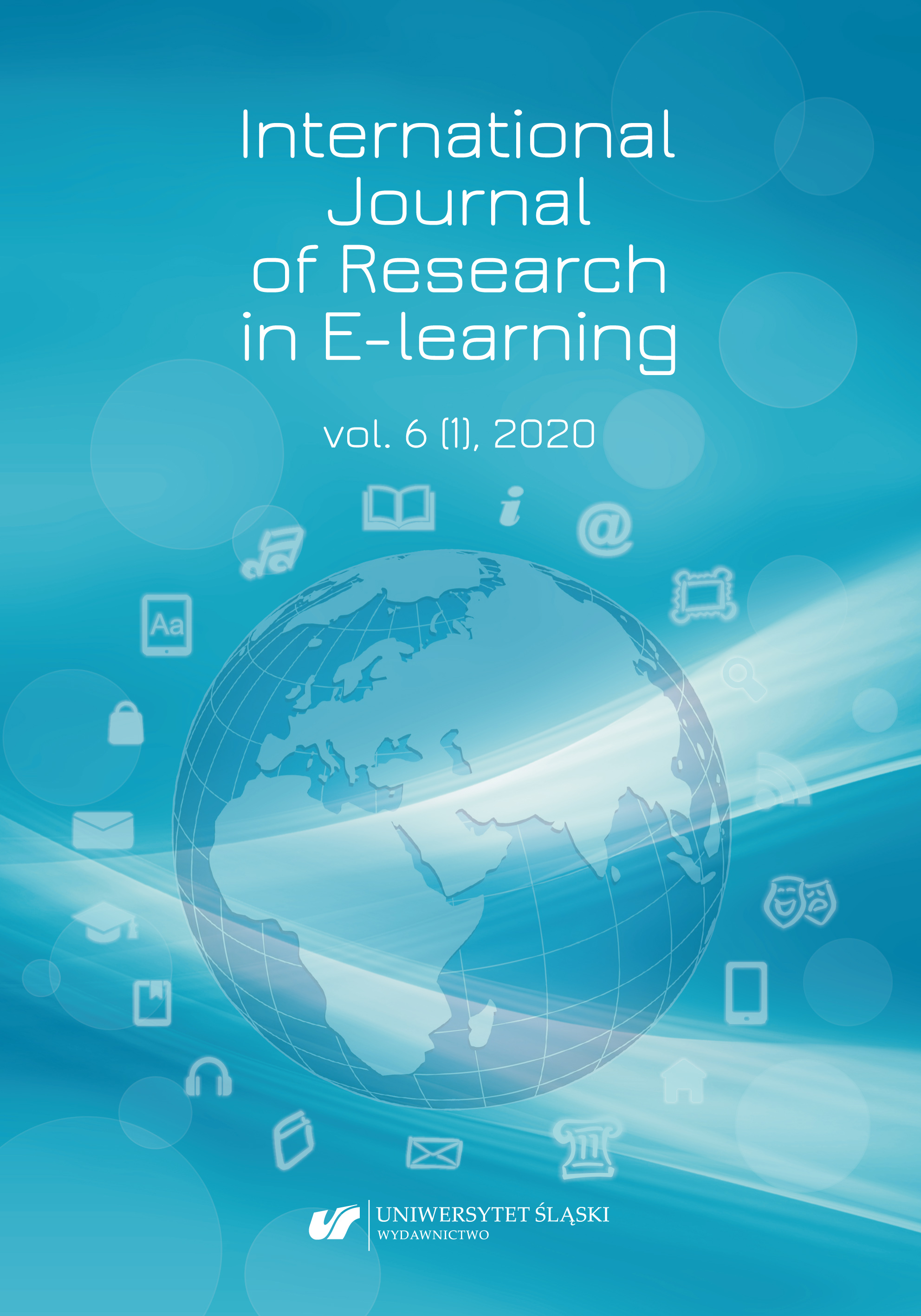Belpaeme, T., Kennedy, J., Ramachandran, A., Scassellati, B., & Tanaka, T. (2018). Social robots for education: A review. Science Robotics, 3(21). https://doi.org/10.1126/scirobotics.aat5954. Retrieved from: https://robotics.sciencemag.org/content/3/21/eaat5954
Google Scholar
Bobko, K., Bubula, M., Marek, J., Sala, W., & Wójciak, P. (2018). Programowanie i robotyka w edukacji wczesnoszkolnej. Kraków: Małopolskie Centrum Doskonalenia Nauczycieli.
Google Scholar
Cliburn, D. C. (2006, October). Experiences with the LEGO Mindstorms throughout the undergraduate computer science curriculum. Frontiers in Education Conference, 36th Annual (pp. 1–6). IEEE (Institute of Electrical and Electronics Engineering).
Google Scholar
Crnokić, B., Grubišić, M., & Volarić, T. (2017). Different applications of mobile robots in education. International Journal on Integrating Technology in Education (IJITE)6 (3). September 2017. https://doi.org/10.5121/ijite.2017.6302
Google Scholar
Curto, B., & Moreno, V. (2016). Robotics in education. Journal of Intelligent & Robotic Systems, 81, 3–4. https://doi.org/10.1007/s10846-015-0314-z
Google Scholar
Ewert, D., Schilberg, D., & Jeschke, S. (2013). Problem-based learning of object-oriented programming with LEGO Mindstorms and leJOS. In Automation, communication and cybernetics in science and engineering 2011/2012 (pp. 315–323). Berlin–Heidelberg: Springer.
Google Scholar
Hixon, R. (2007). Teaching software engineering principles using Robolab and Lego Mindstorms. International Journal of Engineering Education, 23(5), 868–873.
Google Scholar
Huang, L., Varnado, T., & Gillan, D. (2013) An exploration of robot builders’ attachment to their LEGO Robots. In Proceedings of the Human Factors and Ergonomics Society, 57th annual meeting – 2013, 1825–1829.
Google Scholar
IFR, Statistical Department. World Robotics Survey 2008.
Google Scholar
Jolly, A. (June 17, 2014). Six characteristics of a great STEM lesson online. Retrieved from: https://www.edweek.org/tm/articles/2014/06/17/ctq_jolly_stem.html
Google Scholar
Khalaf, K., Balawi, S., Hitt, G., & Radaideh, A. (2010). Innovation in teaching freshman engineering design: An integrated approach. International Conference on Education and New Learning Technologies – EDULEARN10 Proceedings, 709–720.
Google Scholar
Klassner, F. (2002, February). A case study of LEGO Mindstorms’™ suitability for artificial intelligence and robotics courses at the college level. In ACM SIGCSE Bulletin, 34(1), 8–12.
Google Scholar
Mitra, Manu. (2019). Robotics in education and training. Advances in Robotics & Mechanical Engineering, 2(1), 94–96. https://doi.org/10.32474/ARME.2019.01.000126
Google Scholar
Qureshi, M. (2019). 5 Technology Education Trends You’ll See in 2019. Retrieved from: https://bsd.education/5-technology-education-trends-youll-see-in-2019/
Google Scholar
Mubin, O., Stevens, C. J., Shahid, S. Al Mahmud, A., & Dong, J. J. (2013). A review of the applicability of robots in education. Technology for Education and Learning. https://doi.org/10.2316/Journal.209.2013.1.209-0015
Google Scholar
Photon Producer Web-site. https://photonrobot.com/pl
Google Scholar
Smyrnova-Trybulska, E., Kommers, P., Morze, N., Gladun, M., & Zuziak, W. (2017). Robotics in primary school in the opinion of prospective and in-service teachers. A comparative study. International Journal of Continuing Engineering Education and Lifelong Learning, 27(4), 318–338.
Google Scholar
Smyrnova-Trybulska, E., Morze, N., Kommers, P., Zuziak W., & Gladun, M. (2017). Selected aspects and conditions of the use of robots in STEM education for young learners as viewed by teachers and students. Interactive Technology and Smart Education, 14(4), 296–312. Retrieved from: http://www.emeraldinsight.com/doi/pdfplus/10.1108/ITSE-04-2017-0024
Google Scholar
Smyrnova-Trybulska, E., Morze, N., Kommers, P., Zuziak, W., & Gladun, M. (2016). Educational robots in primary school teachers’ and students’ opinion about STEM education for young learners. In P. Kommers, Tomayess Issa, Theodora Issa, E. McKay, P. Isaías (Eds.), Proceedings of the International Conferences on Internet Technologies & Society 2016 (ITS 2016) Educational Technologies 2016 (ICEduTech 2016) and Sustainability, Technology and Education 2016 (STE 2016). Melbourne, Australia, 6–8 December, 2016 (pp. 197–204). IADIS Press.
Google Scholar
Smyrnova-Trybulska, E., Morze, N., Zuziak, W., & Gladun, M. (2016). Robots in elementary school: Some educational, legal and technical aspects. In E. Smyrnova-Trybulska (Ed.), E-learning methodology – Implementation and evaluation. [E-learning] 8, 321–342. Katowice–Cieszyn: University of Silesia–Studio Noa.
Google Scholar
Souza, I. M. L., Andrade, W. L., Sampaio, L. M. R., Araujoy, A. L. S.O. (2018). A Systematic Review on the use of LEGO® Robotics in Education (pp. 1–9). In Conference Proceedings: 2018 IEEE Frontiers in Education Conference (FIE). https://doi.org/10.1109/FIE.2018.8658751
Google Scholar
Tokuyasu, T. (2007, May). Installation of Mechatronics Education Using the MindStorms for Dept. of Mechanical Engineering, ONCT. Mechatronics, ICM2007 4th IEEE International Conference on Mechatronics, ICM 2007 (pp. 1–5). IEEE (Institute of Electrical and Electronics Engineering).
Google Scholar
Zaharija, G., Granić, A., & Grubač, A. (2014). LEaRN – LEgo Robot and Netlogo. In Bože Plazibat & Silvana Kosanović (Eds.), Conference Proceedings: Contemporary Issues IN Economy and Technology – CIET 2014. Volume: Proceedings of CIET 2014 (pp. 209–218). Split: University of Split Publishing.
Google Scholar
Zollman, A. (2012). Learning for STEM literacy: STEM literacy for learning. School Science and Mathematics, 112(1): 12–19. https://doi.org/10.1111/j.1949-8594.2012.00101.x
Google Scholar
Zuziak, W. (2014). Teaching how to code we teach through the coding. In E. Smyrnova–Trybulska (Ed.), E-learning and intercultural competences development in different countries (pp. 371–381). Katowice–Cieszyn: University of Silesia, Studio Noa.
Google Scholar
Zuziak, W. (2013). Designing and programming robots in contemporary didactics in Polish Schools In E. Smyrnova-Trybulska (Ed.), E-learning & Lifelong Learning, 5, 497–509.
Google Scholar
Zuziak, W. (2015). Creatively and informally: Scratch and the remix culture. International Journal of Research in E-learning, 2, 89–105.
Google Scholar


 https://doi.org/10.31261/IJREL.2020.6.1.08
https://doi.org/10.31261/IJREL.2020.6.1.08
